I first visited this place back in September 2019. It was great to see it, but at that time the deeper tunnels were partially flooded and so it was impossible to explore the whole thing. I’ve been meaning to go back ever since, and this month I finally got around to doing that. This time I was armed with wellies, a pokey stick for testing the water depth, and a portable gas detector in case the air was bad down there.
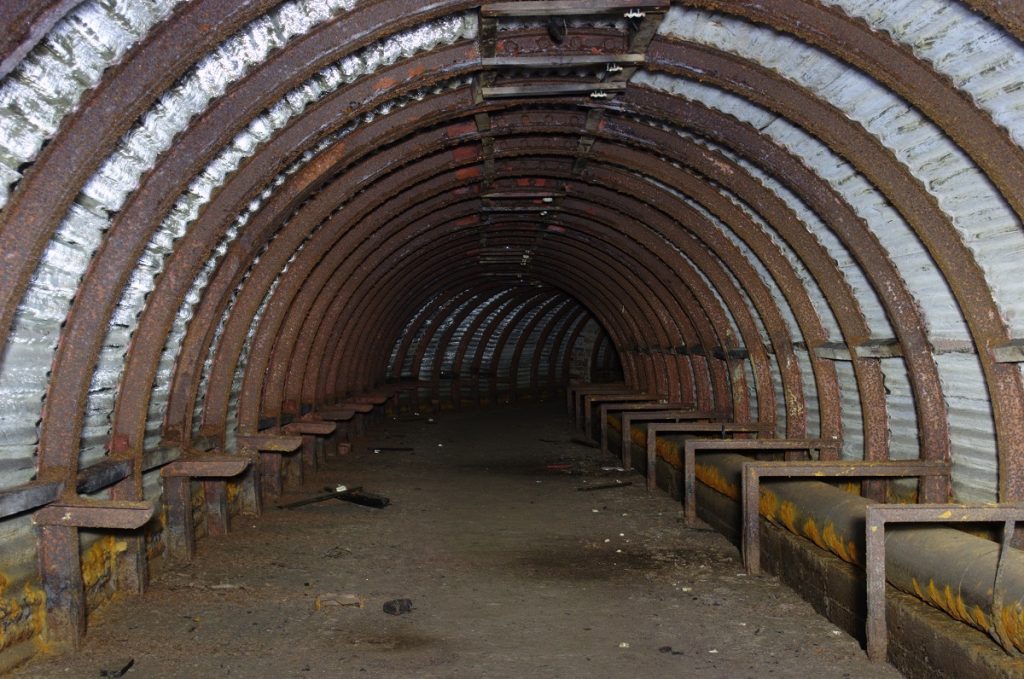
Although it was only early September when we last visited, there was significantly more vegetation in July. At first I couldn’t even find the place where we’d descended the bank in the woods – it just looked like a sheer drop that would be impossible to get down safely. I was about ready to give up and trudge dejectedly back to my car when I found the way down. It was just a lot less obvious with more greenery covering it. It took me longer than I’d expected to find the actual shelter entrance too. At first I thought it must have been covered over since I was last there, but eventually I noticed the tell-tale signs of it a short distance away through the trees. A few moments later, after powering up my action camera and gas detector and messaging my wife to let her know what I was doing, I was in.
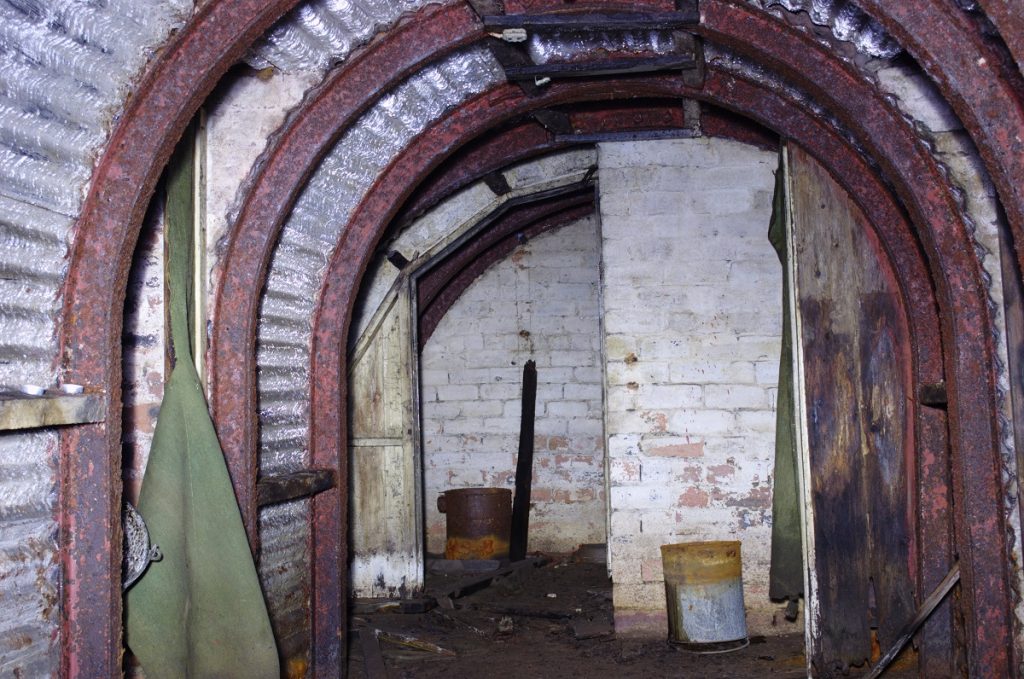
As it turned out, I didn’t even need my wellies or my stick. The water had completely dried up. From other reports I’ve read, this is apparently quite unusual. I guess coming at the end of a week long heatwave had its advantages. The fact that there was no water to contend with, plus having the gas monitor to reassure me that the air quality was just as good in here as it was outside, made this a more relaxed explore than I’d expected, and I had an enjoyable time walking the long-deserted tunnels and looking in all the little side chambers to see what I could find.
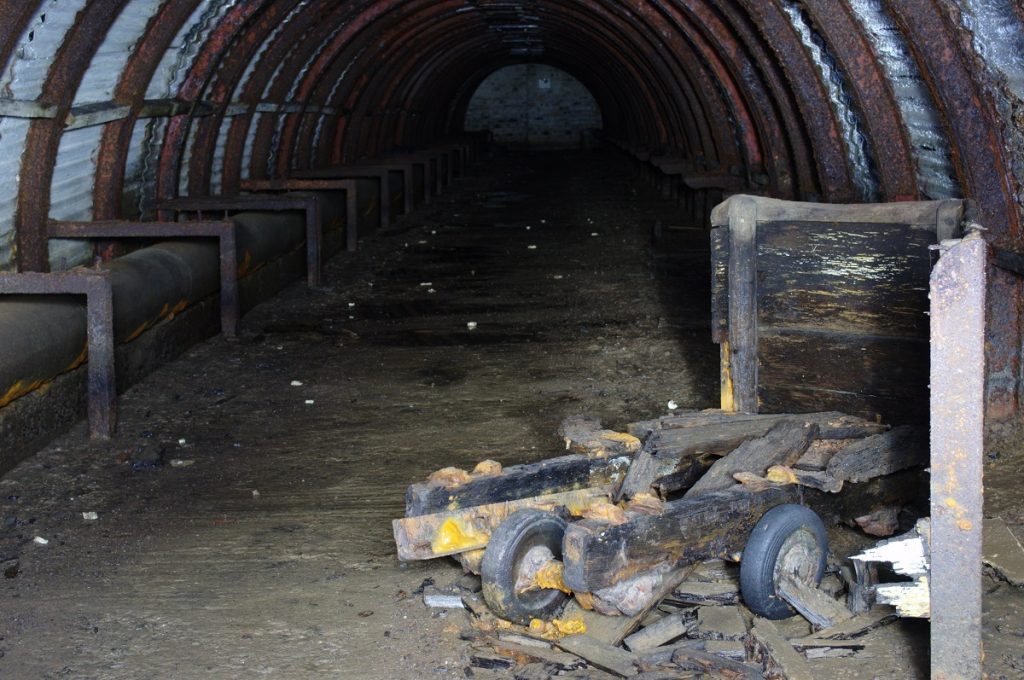
It’s a pretty big shelter. The main tunnel is about 600 feet long, though being in such a confined space messes with my perception of distance and I really had no idea how far I’d actually walked down there. It’s mostly straight, but divided up into several sections by staggered walls that were presumably intended to deaden bomb blasts. It was designed to accommodate up to 1,000 people, though I think it would have felt pretty crowded with that many.
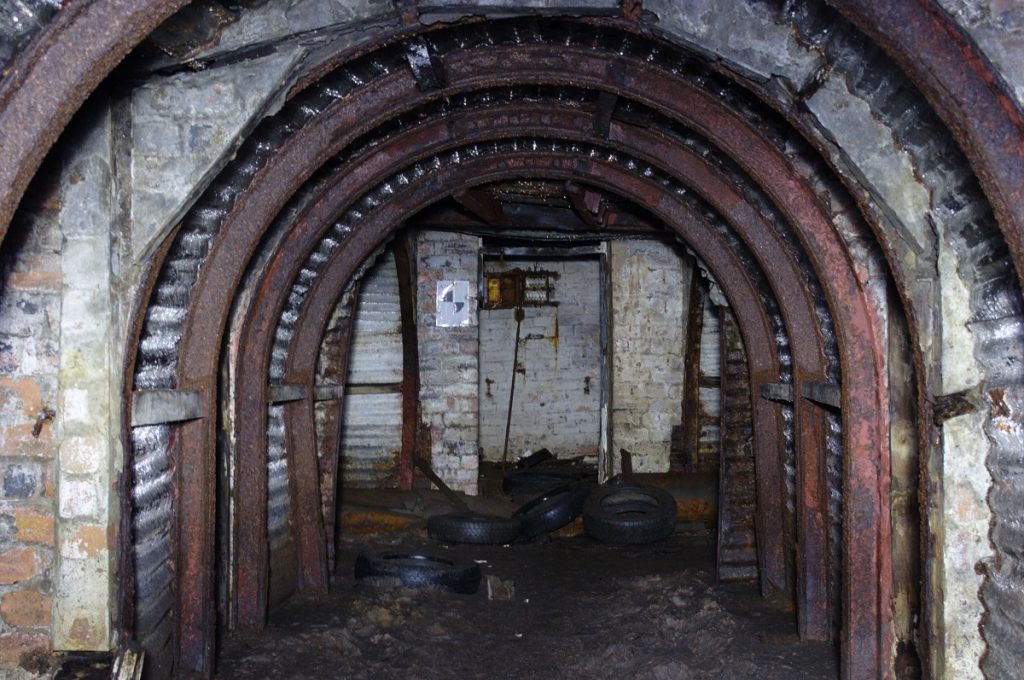
Numerous smaller tunnels branch off to the sides. Some contain toilet cubicles similar to the ones just inside the entrance. Some are now filled with more modern day junk (a beer keg and a bottle of Barr Limeade in one case). One had a fuse box on the wall, indicating that this place probably had electric lighting at one time. Others lead to alternative entrances and exits. There were apparently five of these in all; I was only able to identify three, so I think the other two must have been blocked off.
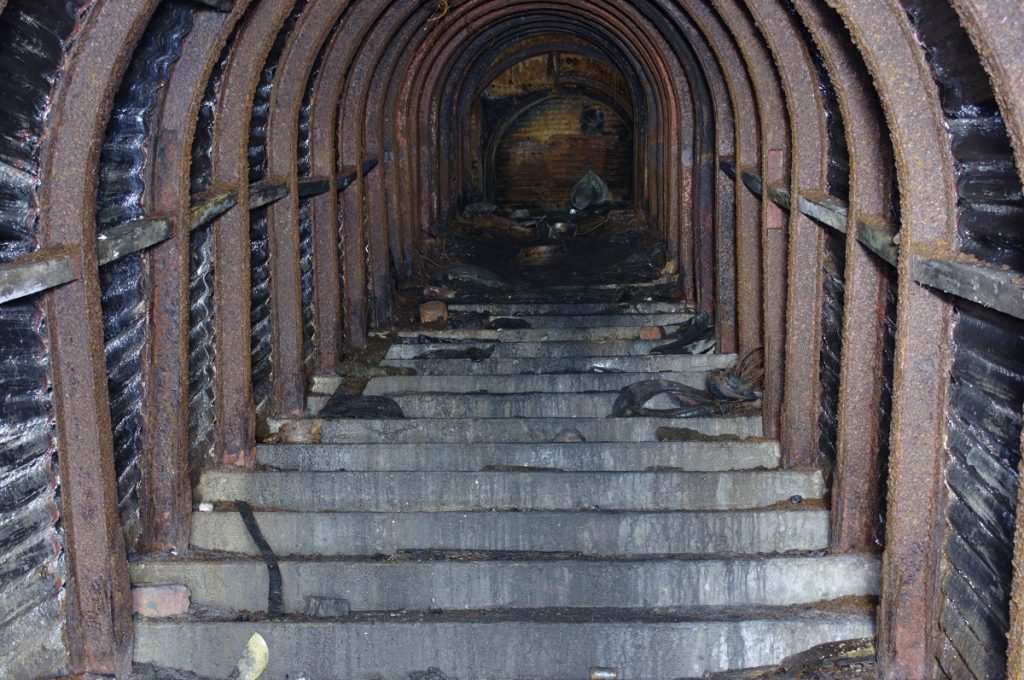

[…] click here to read about my revisit and see photos from the whole […]
Is this in Wrexham? I asked ChatGPT about abandoned places near wrexham and it pulls this up. If it is can you email me back with the co ordinates and i’ll email you back with some spots in Wrexham or your preferred area.
Thanks
No, this one is Scotland. Maybe there’s a similar one near Wrexham?
Where is this shelter please?